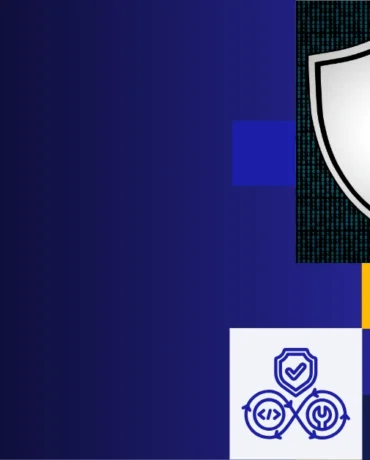Picture this: Your business operates like a high-security fortress. You have firewalls, antivirus systems, and security policies in place. But how confident are you that these defenses can actually keep intruders out? The answer lies in penetration testing, which is essentially the act of simulating cyberattacks to test the strength of your defenses. This is where the concept of Red Team vs. Blue Team comes in.
The Red Team and Blue Team play distinct but complementary roles in this process, each offering valuable insights into your organization’s ability to prevent, detect, and respond to cyberattacks. By understanding how these teams operate, you can significantly strengthen your company’s security posture.
What is a Red Team?
The red team is like the ultimate tester for your security system. They operate as ethical hackers, attempting to breach your defenses using the same tools, techniques, and methods that real attackers would employ. Their mission is to simulate a cyberattack, uncover weaknesses, and identify potential vulnerabilities within your network, applications, or even physical security.
However, the goal of the Red Team isn’t to cause damage. Instead, they document everything they find and report back, so your organization can close those gaps before a real hacker exploits them. By thinking like a cybercriminal, the Red Team helps businesses see their security through the eyes of an attacker.
What the Red Team does:
- Launches simulated attacks to uncover vulnerabilities in systems, networks, or processes.
- Uses techniques like social engineering, phishing, or penetration testing to find weaknesses.
- Attempts to bypass security measures like firewalls, encryption, and authentication.
What is a Blue Team?
The Blue Team is the defender of your digital fortress. Their job is to constantly monitor, detect, and respond to any potential threats in real-time. While the Red Team looks for ways to break in, the Blue Team is always watching for signs of suspicious activity, protecting your network, and neutralizing threats before they escalate.
The Blue Team’s focus isn’t just on stopping attacks in progress. They also work on strengthening security by patching vulnerabilities, conducting regular security audits, and improving response plans. They act as your frontline defense, ensuring that your business is always prepared to counter threats.
What the Blue Team Does:
- Monitors systems and networks 24/7 for signs of attacks or anomalies.
- Detects and mitigates real-time threats using security tools like firewalls and intrusion detection systems.
- Enhances and improves your organization’s defenses based on past attack attempts and lessons learned.
Red Team vs. Blue Team: The main differences
While both teams are essential for maintaining strong security, they approach the task from different angles. The Red Team is all about offense, attempting to find ways into your systems, while the Blue Team focuses on defense, working to stop those attacks and reinforce any weaknesses that are discovered.
Here are the key differences between the two:
| Aspect | Red Team | Blue Team |
|---|---|---|
| Primary Role | Offensive: Simulate real-world attacks to find vulnerabilities | Defensive: Monitor, detect, and respond to security incidents |
| Objective | Find and exploit weaknesses to simulate how attackers might breach systems | Protect the organization by detecting and neutralizing attacks in real-time |
| Mindset | Think like a cybercriminal to uncover security gaps | Think like a defender, focusing on protecting the network and responding to threats |
| Tools Used | Hacking tools, exploit frameworks (e.g., Metasploit), social engineering tactics, malware | SIEM (Security Information and Event Management), firewalls, monitoring tools, antivirus software |
| Approach | Offensive tactics, mimicking real-world cybercriminals | Defensive strategies, real-time monitoring, and response |
| Duration | Short-term, planned engagements (e.g., a simulated attack lasting days or weeks) | Continuous, ongoing 24/7 defense of the organization’s infrastructure |
| Techniques | Penetration testing, vulnerability exploitation, phishing, physical security testing | Real-time threat detection, incident response, system hardening, patching vulnerabilities |
| Timeframe | Perform attacks over a limited period, testing specific scenarios | Active defense and monitoring at all times, continuously responding to threats |
| Goal | Test the resilience of security defenses by simulating cyberattacks | Minimize damage from real attacks, contain threats, and strengthen defenses over time |
| Collaboration | Provide a report of vulnerabilities and attack methods to the Blue Team | Use the Red Team’s findings to patch vulnerabilities and improve overall security |
| Focus | Exploiting security gaps and bypassing defenses | Strengthening defenses, responding to attacks, and closing vulnerabilities |
How Red and Blue Teams work together
Although the Red Team and Blue Team seem to be on opposing sides, they are actually working toward the same goal: improving your organization’s security. Their collaboration is what makes this approach so powerful.
Here’s how they work together:
- The Red Team simulates attacks and documents any vulnerabilities they discover.
- The Blue Team analyzes the results of these simulated attacks to understand how well they responded, and more importantly, how they can improve.
- Both teams then work together to patch vulnerabilities, strengthen defenses, and adjust security strategies based on lessons learned.

This cycle of testing and improving keeps your business one step ahead of cybercriminals. It allows you to be proactive in preventing attacks, rather than scrambling to recover after a breach.
Why Red Team vs. Blue Team matters for your business
Every business—whether you’re in healthcare, fintech, or e-commerce—faces risks from cyber threats. A single security breach can cost millions of dollars, damage your reputation, and even put your entire operation in jeopardy. Relying solely on passive defense systems is no longer enough. You need to actively test your security and adapt to the evolving tactics used by cybercriminals.
By employing both Red and Blue Teams, your business can:
- Proactively identify vulnerabilities before hackers do.
- Strengthen your defense mechanisms, making it harder for attackers to penetrate your systems.
- Improve incident response times, minimizing damage and recovery costs if an attack does occur.
- Ensure continuous improvement of your cybersecurity measures, keeping you prepared for future threats.
The Red Team vs. Blue Team approach is one of the most effective ways to assess and enhance your business’s cybersecurity posture. It’s about more than just finding problems—it’s about creating a system of continuous learning and improvement that makes your business more resilient in the face of cyber threats.
Final thoughts
In the fast-paced digital world, your business can’t afford to be reactive when it comes to cybersecurity. The Red Team vs. Blue Team strategy offers a balanced and proactive approach, allowing you to stay ahead of potential attackers and strengthen your defenses continuously.


